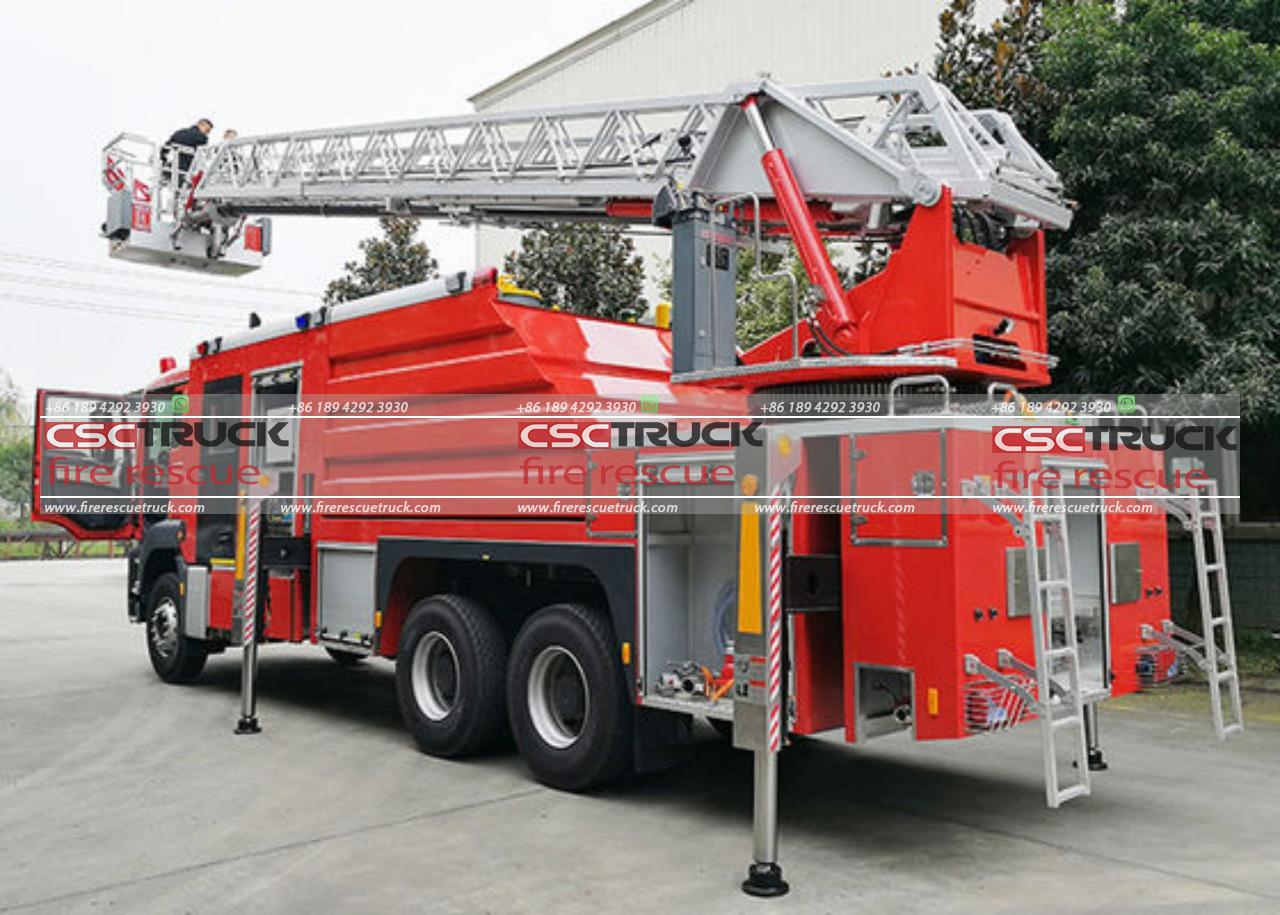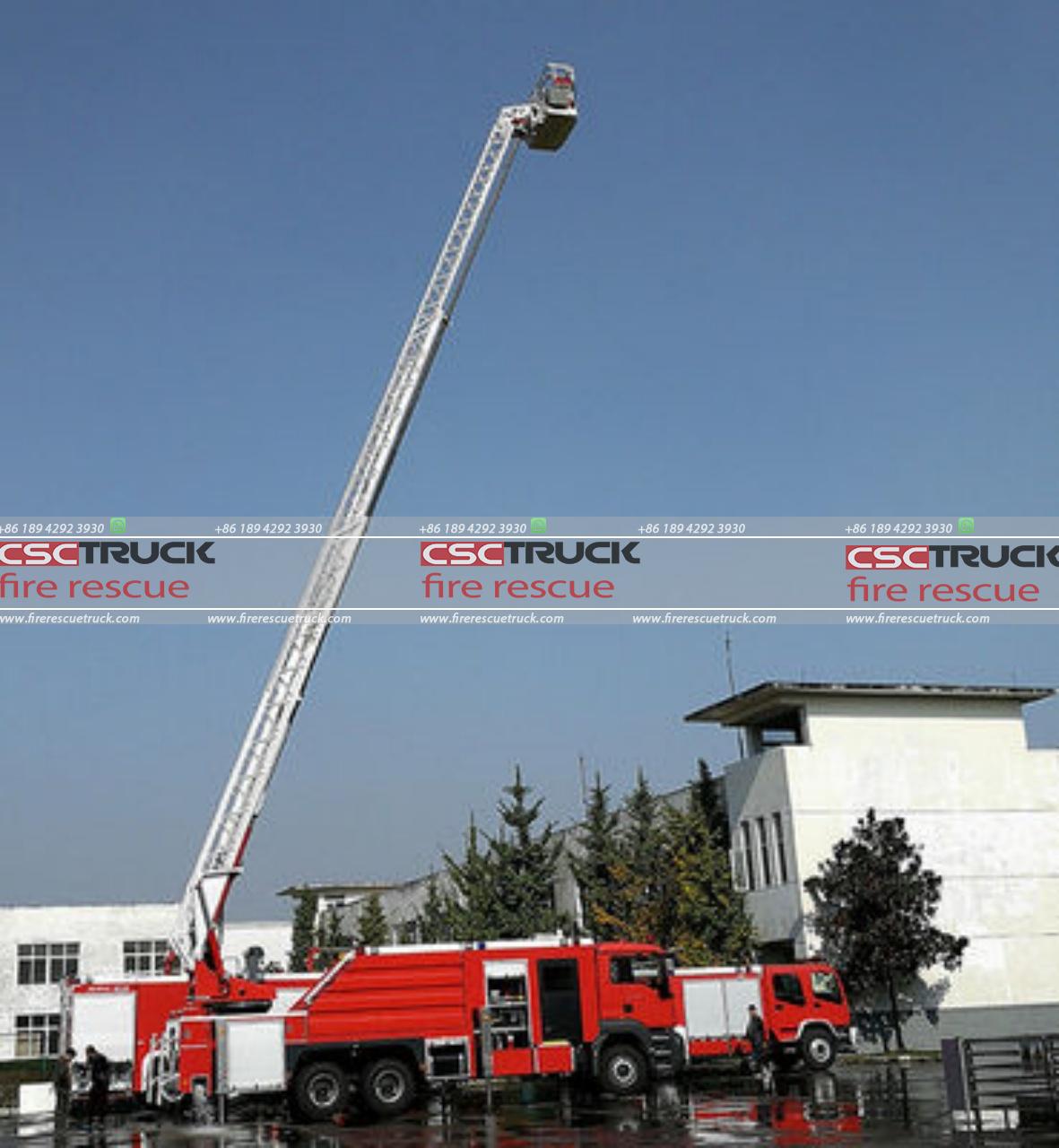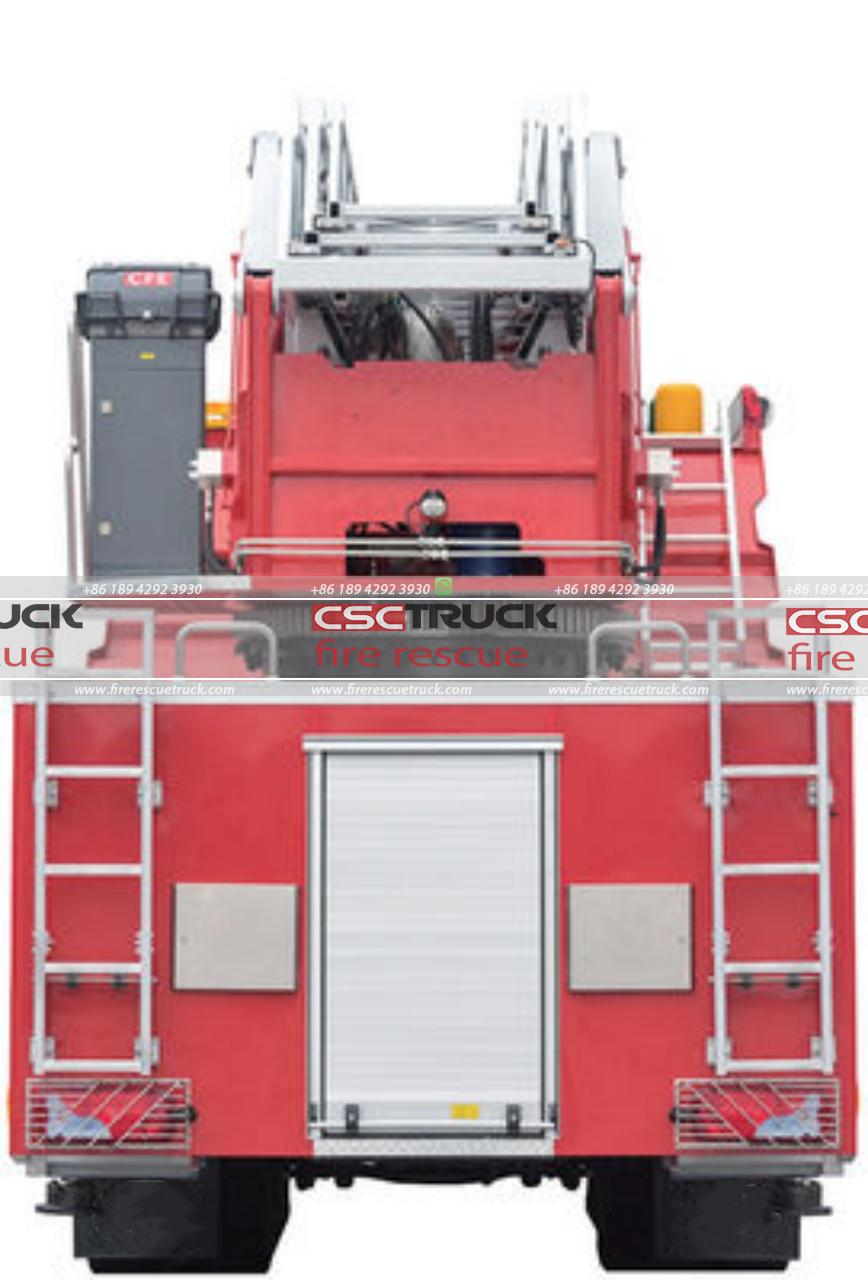What is the Ladder Fire Truck?
Fire trucks are iconic machines, essential for saving lives and protecting property during emergencies. Among these vehicles, the ladder fire truck, also known as the aerial ladder truck, is a particularly recognizable and vital tool in firefighting. This specialized truck is equipped with a long, extendable ladder designed to provide firefighters with vertical and horizontal access to areas that would otherwise be unreachable. In this article, we will explore the ladder fire truck in detail, examining its components, uses, and key role in firefighting.
The Purpose of the Ladder Fire Truck
The ladder fire truck’s main purpose is to enable firefighters to reach high locations, such as upper floors of buildings or rooftops, during fire rescue operations. Firefighters may need to rescue individuals trapped in these elevated areas or deliver water to flames that cannot be easily reached from the ground. This makes ladder fire trucks especially valuable in urban areas with tall buildings, where they serve as a vital piece of equipment for fire departments.
Besides firefighting, ladder trucks can also provide access to technical rescues, such as retrieving people from construction sites, cliffs, or other challenging environments. They are often used in other emergencies like floods or natural disasters where they can reach elevated positions or provide stable platforms for rescue operations.

Key Components of a Ladder Fire Truck
Ladder fire trucks have many components, each serving a specific function. Here are some of the primary components that make up these vehicles:
1. Aerial Ladder: The aerial ladder is the central feature of a ladder truck. It consists of several extendable sections that can reach significant heights, often up to 100 feet or more. The ladder is mounted on a turntable, allowing it to rotate 360 degrees and provide maximum reach in all directions.
2. Hydraulic System: The ladder relies on a complex hydraulic system to extend, retract, and maneuver the ladder precisely. This hydraulic system is responsible for supporting the ladder’s weight, as well as the weight of the firefighters and equipment it carries.
3. Stabilizers (Outriggers): To keep the truck steady during operations, ladder fire trucks are equipped with stabilizers or outriggers. These extendable arms are deployed from the sides of the truck and placed firmly on the ground, widening the truck’s base and preventing tipping when the ladder is extended.
4. Water Pump and Nozzle: Many ladder fire trucks have built-in water pumps and a master stream nozzle mounted at the end of the ladder. This nozzle allows firefighters to direct a powerful water stream onto the fire from an elevated position. In cases where firefighters cannot approach a fire directly due to heat or structural instability, the nozzle provides a safe means of delivering water from above.
5. Compartments for Equipment and Tools: Ladder trucks are designed to carry a wide range of firefighting equipment, including axes, hoses, pry bars, chainsaws, ventilation fans, and rescue tools. These tools are essential for firefighters to perform various tasks, from breaking down doors to ventilating buildings filled with smoke.
6. Communication and Control Systems: Effective communication is crucial in firefighting, especially when operating at height or around complex fire scenes. Ladder fire trucks are equipped with intercoms, radios, and other communication devices that allow the crew to coordinate their efforts during rescue and firefighting operations.
7. Safety Harnesses and Equipment: Given the dangers of working at height, ladder trucks are equipped with harnesses, lifelines, and other safety equipment. This allows firefighters to operate on the ladder safely, reducing the risk of falls and other accidents.
Types of Ladder Fire Trucks
There are several types of ladder fire trucks, each suited for different environments and firefighting needs. Here are the main types:
1. Straight Ladder Trucks: These trucks feature a telescoping ladder without any additional attachments. They are typically used for straightforward fire access and rescues, allowing firefighters to reach high windows or roofs quickly.
2. Platform Ladder Trucks: Also known as tower ladders, these trucks have a platform or “bucket” at the end of the ladder, which can hold one or more firefighters. Platform ladders are often preferred for rescues or situations requiring prolonged work at height, as they provide greater stability and safety for firefighters.
3. Tiller Trucks: A tiller truck has a long, articulated ladder mounted on a semi-truck-style chassis. These trucks are highly maneuverable, making them ideal for navigating tight city streets. They often have 2 drivers – one in the front cab and one controlling the rear wheels – which allows them to make sharp turns.
4. Quint Ladder Trucks: “Quint” is short for “quintuple,” referring to the truck’s five capabilities: an aerial ladder, water pump, water tank, fire hose, and ground ladders. Quints combine the functions of a standard ladder truck with those of a pumper truck, offering a versatile solution for fire departments that need a multipurpose vehicle.

How Ladder Fire Trucks are Used in Firefighting
The ladder fire truck plays multiple roles in firefighting, and its use requires a well-trained team. Here’s an overview of some primary ways it’s used:
1. Rescue Operations: In cases where people are trapped in upper stories, ladder trucks allow firefighters to quickly reach and rescue them. The ladder provides a safe path for people to climb down or allows firefighters to bring them down using specialized harnesses or basket stretchers.
2. Fire Suppression from Above: The elevated water nozzle on ladder trucks allows firefighters to deliver water from above, which is especially useful for large or tall building fires. This overhead attack helps in dousing flames that might be inaccessible from ground level or through internal building pathways.
3. Ventilation: Ventilating a burning structure is essential to reduce heat and smoke, making it easier for firefighters to see and work inside. Ladder trucks allow firefighters to access rooftops and break windows or cut openings to allow smoke to escape, helping clear the air inside and lower the temperature.
4. Accessing Hard-to-Reach Areas: Ladder trucks are also used in non-fire-related emergencies, like reaching accident victims on tall structures or helping with rescues on cliffs or other high places.
5. Lighting and Surveillance: Many ladder trucks are equipped with powerful lights that can illuminate fire scenes at night or in low-light conditions. Some trucks also have cameras on the ladder tip, allowing crews to assess the situation from above, which helps in strategizing firefighting and rescue efforts.
Training and Skill Requirements for Ladder Fire Truck Operators
Operating a ladder fire truck requires specific training, as it involves handling both a heavy vehicle and sophisticated equipment. Operators must be skilled in driving a large truck, positioning it accurately, and extending the ladder safely. Firefighters are trained in the use of hydraulic controls, stabilizers, and water pumps. They must understand the truck’s weight limits and how to deploy the ladder without compromising stability, especially under challenging weather or ground conditions.
Ladder truck operators must also coordinate closely with other members of the firefighting team. Timing and precision are critical, particularly during rescues or when delivering water streams to extinguish flames. Communication skills are essential, as operators need to relay information about ladder position and fire conditions to other firefighters, enabling them to work together effectively and safely.

Conclusion
The ladder fire truck is an essential asset in firefighting, equipped with specialized features that allow firefighters to access high and difficult-to-reach areas, perform rescues, and suppress fires from above. Its various components, including the aerial ladder, hydraulic system, stabilizers, and water delivery system, make it versatile and capable of handling complex firefighting scenarios. With different types of ladder trucks designed for unique environments and tasks, fire departments can choose models that best fit their operational needs.
In all its forms, the ladder fire truck is more than just a vehicle; it is a lifesaving platform that enhances the reach, efficiency, and safety of firefighting teams. The truck embodies the spirit of firefighting — bravery, innovation, and readiness to tackle the most daunting of challenges.







